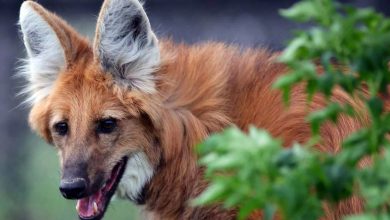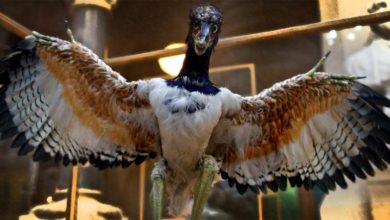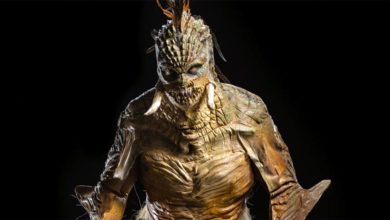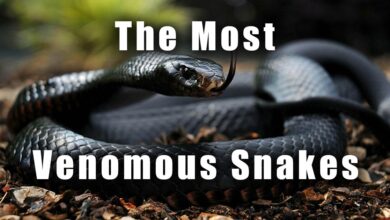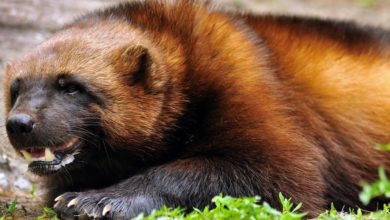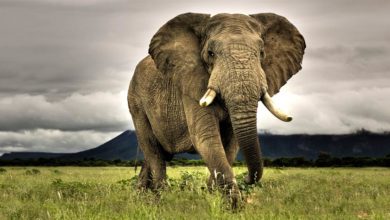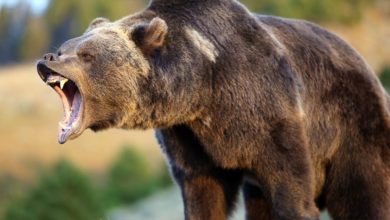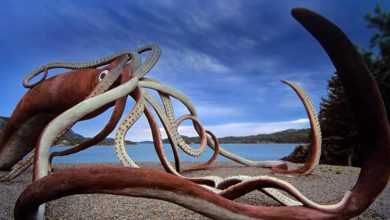Lion or leopard? The secret of Marozi
Cryptids are animals that electrify the zoological community. Many zoologists are skeptical about this, but some try to verify the truthfulness of reports about mysterious animals from around the world. Such actions are taken because sometimes the cryptid turns out to be a really existing animal.
Classification
- Family: Felidae
- Subfamily: Pantherinae
- Genus: Panthera
- Species: Panthera leo
- Subspecies: †Panthera leo maculatus
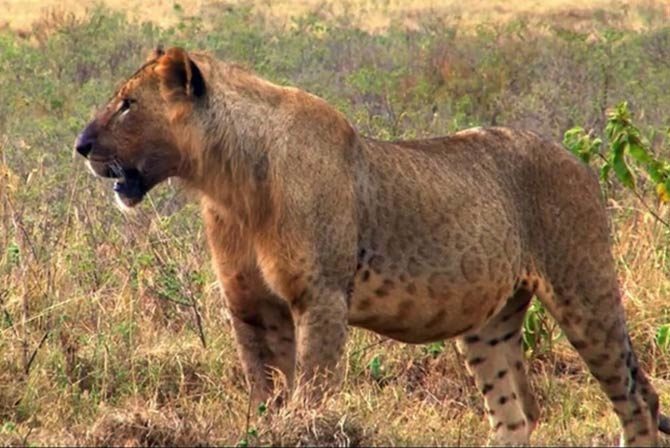
Mysterious animals of Africa
Among the peoples of Africa, there are many stories about various mysterious animals. Some of them, such as Mokele-Mbembe, turned out to be a highly transformed image of animals known to science. Others, such as the “Nandi Bear“, raise doubts to this day, because although they cannot be clearly rejected, no sufficiently reliable explanation has been found. A few turned out to be true over time.
Initially, European scholars did not believe the news of the “short-necked forest giraffe” until the existence of an okapi was unequivocally proven. A real animal turned out to be a spotted lion, referred to by natives of Kenya as marozi.
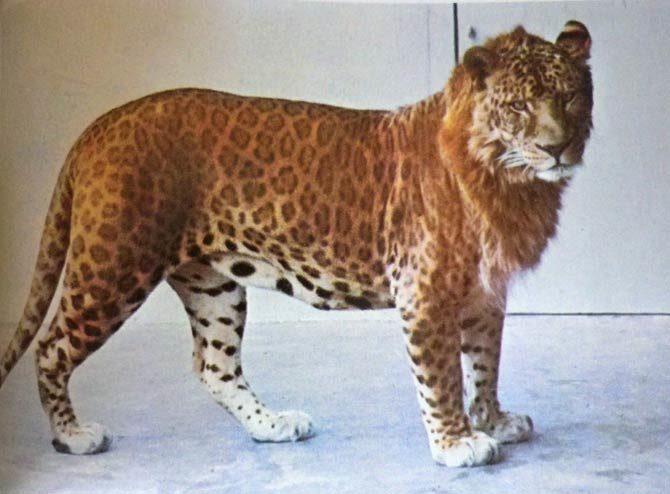
Marozi – a mysterious mountain lion
When Europeans settled in Africa for good, they often listened to the stories of members of the tribes inhabiting this continent. In Kenya, the attention of newcomers was drawn to frequent reports of unusual-looking and behaving lions. These animals were to live in an environment unusual for these predators: at high altitudes (even up to 3,000 meters (9842 ft) above sea level) and in dense forests. They had the silhouette and build of a lion, but were slightly smaller. Their skin was supposed to be mottled and the males had a very sparse or lacking mane.
The first European to confirm the existence of strange lions was the English hunter Major W.R. Foran. In 1906, he personally shot a couple of animals – a lion and a lioness, but with unusual coloration. Instead of uniform, fawn hair, their fur had numerous, clearly visible spots, mainly on the abdomen, legs and sides. The male had no mane and the animals were slightly shorter than typical lions.
Several years later, the hunter G. Hamilton-Snowball shot a large cat, which he was unable to recognize – the animal was like a leopard, but darker. At first, he thought it was an unusually colored leopard, but the guide told him that this animal is as different from a leopard as a marozi is from a lion. Thus, the hunter became the first European to hear this name. Of course, he listened carefully to the natives’ stories – he learned that marozi is a lion colored like a leopard, living in mountain forests. In 1923, Hamilton-Snowball went to the mountains and there he saw with his own eyes some animals described by the natives. From the guide, he heard that these were just marozi.
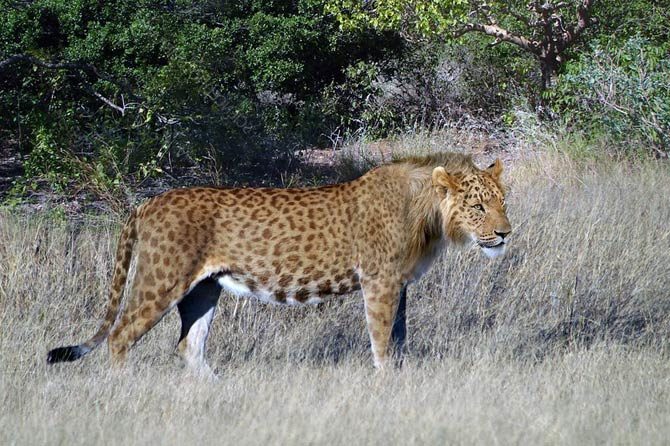
And yet the marozi does exist!
In the 1930s, as the British explored Kenya more intensively, there were more and more reports of marozi. Those who venture into the mountains spoke of dwarf lions with mottled skin. In 1931, a farmer, Michale Trent, killed two lions in the Aberdare Mountains that displayed all the characteristics of a marozi. He kept the skins as trophies, which caught the attention of a Kenyan wildlife conservation officer, who took the skins to Nairobi for a thorough examination.
There a team of scholars gathered over them, who decided that the skins were certainly from three-year-old lions. However, while tiny spots do appear in lions, they are only found in young animals and never so clear and in such a large number. So an animal undescribed by science was discovered. In this way, marozi officially ceased to be a legendary animal – scientists have gained the final proof of the existence of a predator still unknown to science.
The expedition led by the traveler Kenneth Gandar-Dower turned out to be the ultimate proof of the existence of marozi After seeing the skins of the animals Trent killed, he decided to personally capture or kill more of the specimens. He went to the mountains and hunted at the height of 3,000-3,500 meters (9,842 – 11,482 ft) above sea level. There, he managed to hunt marozi and deliver a skin and a skull of this animal. In addition, he obtained a lot of valuable information from the natives about the habits of the animal.
Since then, scholars have wondered where this animal belongs in systematics. Was it really a new species? Several subspecies of lions are known, but in this case, the differences are much greater.
The well-known Belgian zoologist Bernard Heuvelmans, who devoted most of his life to studying cryptids and trying to explain them rationally, already in 1955 postulated to make marozi a separate species, which he even named Leo maculatus (spotted lion). The arguments justifying the recognition of marozi as a new species were as follows: smaller sizes compared to other varieties of lions and a completely different living environment.
All known lion populations have lived in the savannah and bush, but none have been found deep in the forest or at such high altitudes.
Currently, however, marozi is classified as a subspecies of a lion and has the scientific name Panthera leo maculatus.
A cross between a lion and a leopard
- Leopon – a hybrid (cross) of a leopard and a lioness
- Lipard – a hybrid (cross) of a lion and a leopardess

Where did the marozi come from?
The question of the origin of the marozi remains to be clarified. There is no single recognized thesis here. In its time, many scholars speculated that it originated as a cross between a lion and a leopard. The relationship between these animals is so close that it would indeed be possible. Such hybrids called “lipards” or “leopons” were previously often obtained on purpose: lions were crossed with leopards for experimental purposes, and also – unfortunately – for entertainment purposes (lipards and leopons were found in circuses). The hybrids obtained by such crosses were usually fertile – so it would indeed be possible for a wild population of lion-leopards to arise.
This hypothesis was hampered by two important counter-arguments. First of all, lion-leopards have never been observed in nature. The reason for this is simple – in nature, lions and leopards are enemies, and they lead a completely different lifestyle. Besides, both lions and leopards are found at lower altitudes. In dense, mountain forests, leopards are rare, and lions never. It seems unlikely that the crossing of these two species – even if it did happen – would result in an animal that would choose such a different habitat.
Another theory about the formation of spotted lions is related to human activity. As pastoralism developed among the tribes inhabiting the plains of Kenya, predators were exterminated more and more. It is possible that a group of lions broke off from the rest of the population and found relatively safe refuge in mountain hideouts. With time, there was an adaptation to life in different conditions, which gave rise to a new form adapted to life in mountain forests and in lower temperatures. The adaptive features would be smaller body dimensions, enabling more efficient movement over uneven and overgrown terrain, as well as preserving spots throughout life, which would facilitate masking among dense vegetation.
Marozi was eventually recognized by science, but has yet to be thoroughly investigated. We may never have a chance for this – it is possible that this animal has already died out or has been exterminated, because it has not been seen since the late 1930s. Nevertheless, it remains a perfect example that while the tales of natives and hunters may be exaggerated, they should not be ignored – you never know if there is a grain of truth in them.
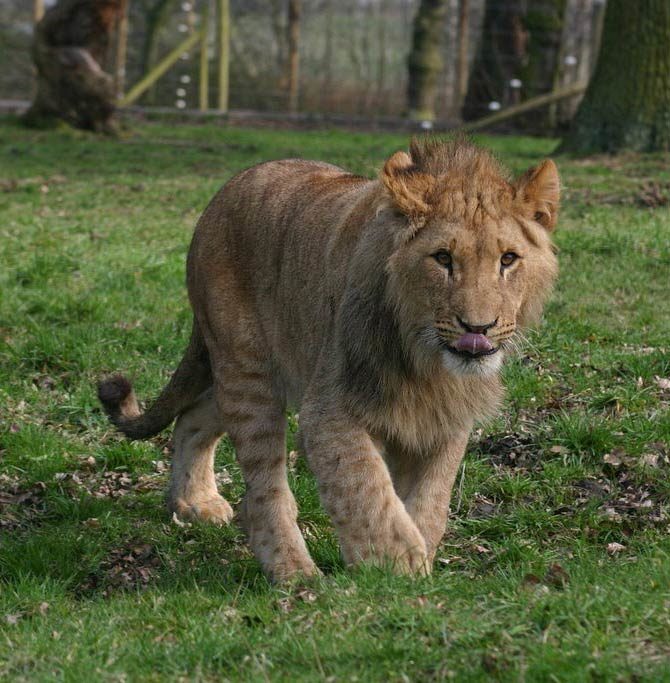
Marozi – interesting facts
- There is an animal known to the people of Zimbabwe called nsuifisi, which means “hyena-leopard”. This animal was supposed to resemble a leopard, but colored like a hyena. It was considered a legend, but in 1926 an exceptionally large cheetah specimen was shot, its fur showed large spots arranged in uneven stripes – like a hyena. It turned out that nsuifisi really exist – these are grown cheetahs with unusual coloration. In English, they are called king cheetah (royal cheetah).
- In the 20th century, lions, leopards, tigers, jaguars and pumas were repeatedly crossed in zoos and circuses. In this way, hybrids were obtained, which in turn were crossed with each other. The result was animals with a very unusual appearance. These experiments yielded a lot of information about the evolution of felids.

Recommended
- Nandi Bear
- African lion
- Leopard
- Aboriginal Rainbow Serpent
- Yowie
- Yeti
- Tsavo lions
- Leopard of Panar
- Champawat Tiger
- Kesagake – a vengeful bear
- Crocodile Gustave
- Man-eaters
- Beast of Gévaudan
- Animal records








